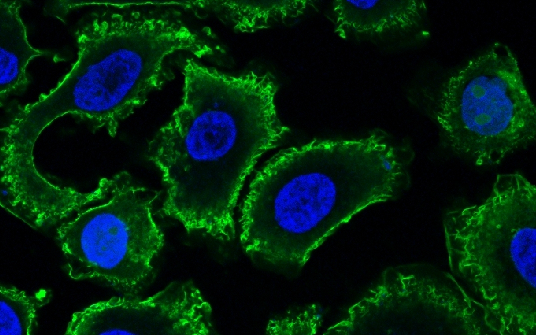Scientists Write New Language for Cells
Posted on: 11 April 2016
In a ground-breaking study that merges linguistics, biochemistry, computer science and mathematics, scientists in Trinity College Dublin’s School of Biochemistry and Immunology have written a formal language that enables deciphering of the highly complex manner in which proteins are modified by sugar molecules.
In the study just published in world-leading systems biology journal, PLOS Computational Biology, a new computer-based language and computational model are presented, along with a freely available interactive web application.
Group leader, Gavin Davey, who is Associate Professor in Neuroscience at Trinity, said: “The majority of proteins in the human are modified with millions of sugar molecules by a process called glycosylation. This is extremely important and fundamental to physiological processes like blood typing. However, the field of glycobiology still does not understand how the body’s cells control these glycosylation events.”
“This has enormous ramifications for cancer cells, neurons, immune cells and any other cell type that has its surface enriched with glycoproteins that give rise to their surface ‘glycome’."
"Without a deeper understanding of how the cell surface glycome materialises it is unlikely that we will ever fully comprehend how cells communicate with each other or indeed how miscommunication arises in cancer and neurodegenerative diseases.”
To understand how cells develop multiple glycoforms of the same protein Professor Davey’s group undertook a multi-disciplinary approach involving linguistics, enzymology and mathematical modeling.

Inventor of the language, Andrew McDonald, said: “In order to make sense of the problem we took our lead from the linguist, Noam Chomsky, who described the formal properties of grammars back in 1959. We had to assign a formal letter-based grammar that allows simple representation of the millions of glycoforms that cells produce.”
“We then constructed a method for their graphical interpretation, and a pattern-matching algorithm that generates networks of enzyme-catalysed reactions. This system is capable of predicting the millions of possible glycoforms in the cell and also the control points that generate much of the complexity present in normal and cancerous cells.”
It is planned that further insight into how cancer cells, immune cells and neurons change their surface glycosylation during disease states will be revealed.
Funding for the interdisciplinary study was provided by EU Marie Curie and Science Foundation Ireland awards to Professor Davey.
